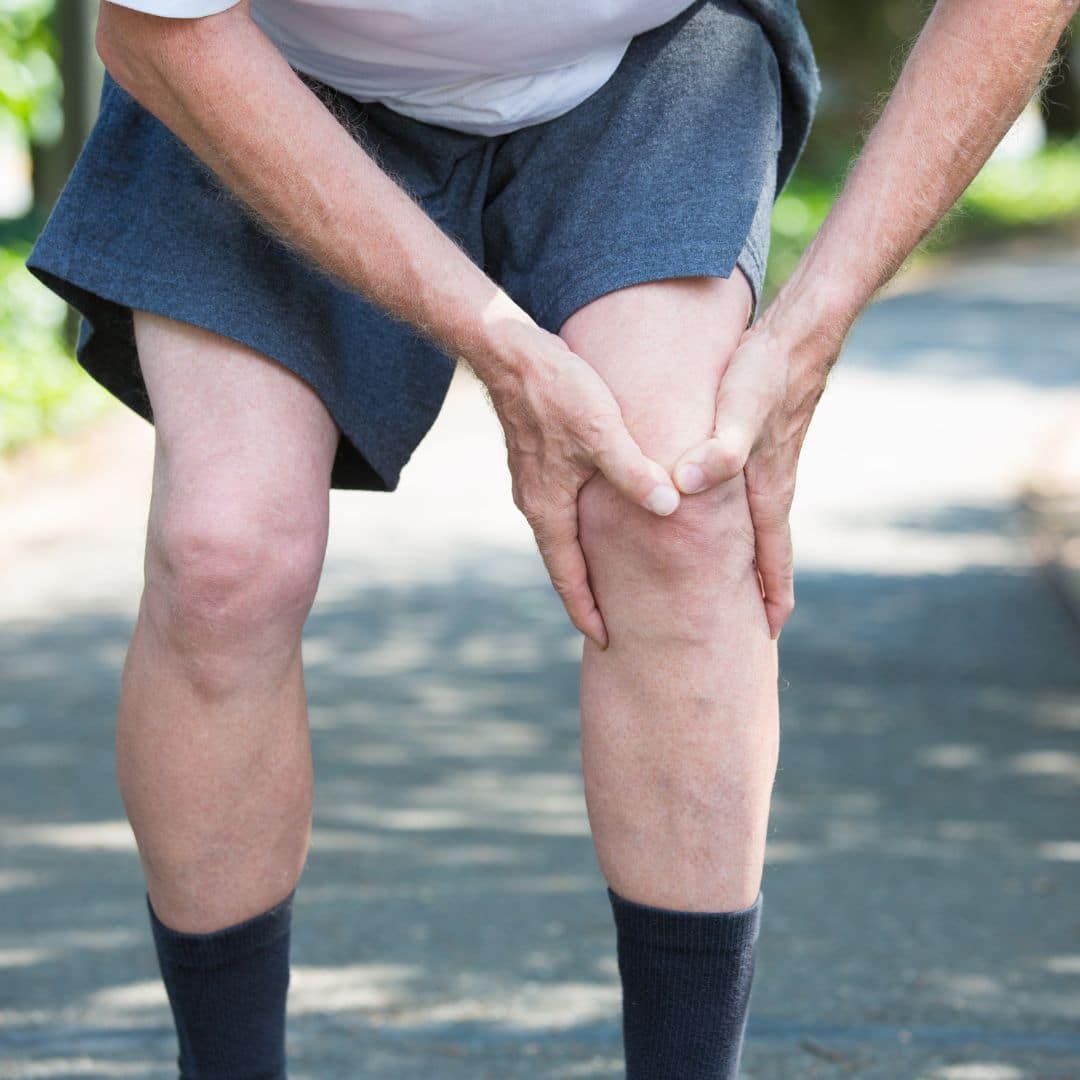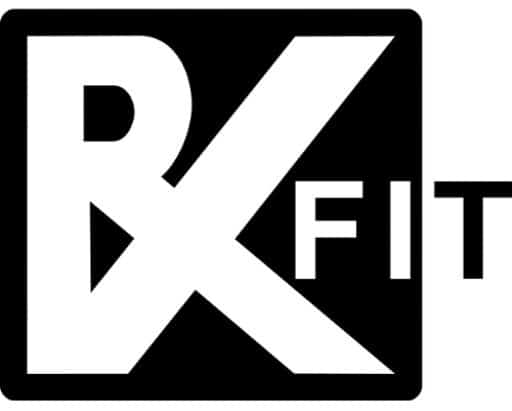A bone bruise can be caused by repeated impact or stress on bone surfaces and is the result of broken blood vessels rupturing beneath the bone’s protective membrane. But can you exercise with a bone bruise?
The fact is there are some common exercise-related causes including repetitive stress, direct impact, sports injuries, and improper training techniques.
Understanding these causes is the first step in navigating exercise with a bone bruise. In this guide we’ll help you figure out just how you can exercise while managing a bone bruise but more importantly how to prevent bone bruising during exercise.
Significance of Bone Bruises in Exercise
Before we go into answering the question “Can you exercise with a bone bruise?”, we first need to understand the significance of bone bruising.
Bone bruising in exercise, while often not severe, can impede progress and lead to complications if ignored. Persistent pain underlying bone, during and after activity may prompt compensatory movement such as straining other muscles and joints.
Studies show that ignoring the symptoms of bone bruising can delay healing, increase the risk factors of re-injury, and potentially progress to things worse than traumatic bone bruising and even stress fractures that will ultimately require extended recovery or surgery. Recognizing and addressing symptoms promptly can prevent long-term consequences and help you maintain a successful exercise routine.
Need help with recovery? At RxFit, our certified fitness professionals are dedicated to enhancing your mobility, strength, and flexibility conveniently within the confines of your home, office, or condominium. We can fit seamlessly into your busy schedule.
Understanding Bone Bruises
While we think of bruises as those colorful marks on our skin after a bump, bones can bruise too! But what exactly happens when bone bruises occur and how do we know if we’ve got a bone bruise on our hands? Let’s explore their anatomy, common symptoms, and the path to diagnosis as we figure out, “Can you exercise with a bone bruise?”
Anatomy of a Bone Bruise
When you think of a bone bruise try to picture a castle’s structure. The dense cortical bone acts as an outer fortification, guarding the inner marrow. Surrounding this fortress is the periosteum, a membrane with nerves and blood vessels. In a bone bruise, the periosteum absorbs the impact, causing blood vessel rupture, internal bleeding, and a bone bruise (subperiosteal hematoma). But can you exercise with a bone bruise after a description like that? Let’s find out, but first, we need to be able to identify when a bone bruise and soft tissue injury occur.
Common Symptoms and Diagnosing
Identifying bone bruising involves recognizing distinct symptoms, unlike a superficial bruise or a much more traumatic bone fracture. Look for localized pain such as a dull ache intensifying during activity. Tenderness when pressure is applied to the affected area can also indicate damage. The swelling arises from blood and fluid accumulation that presents as puffiness.
You may find that there is some loss in joint function based on where the bruise is and the severity. Traumatic bone bruises can lead to extremely limited movement and skin discoloration may also appear. Diagnosing a bruised bone can be challenging due to its internal nature; X-rays often miss soft bone tissue damage but help rule out other injuries and bone fractures in the process.
Types of Bone Bruises
While the term “bone bruise” paints a general picture of internal damage, these injuries aren’t all created equal. Just like bruises on your skin come in a black and blue mark of vibrant shades, bone bruises have their spectrum of severity and location, each with its own set of quirks and consequences.
Subperiosteal Bone Bruises
Subperiosteal bruises are often considered the most painful and stem from periosteum impact, which is similar to a punching bag under stress. They are common in incidents like shin splints or forceful falls on the elbow. In instances like these, they cause intense pain, swelling, and tenderness. The healing process typically spans weeks and demands proper rest and effective pain management for bone healing.
Subchondral Bone Bruises
Subchondral bone bruises can occur discreetly beneath joint cartilage due to repetitive impact on the surface of the bone or twisting forces, causing bleeding and inflammation. Unlike subperiosteal bruises, they manifest as dull discomfort and stiffness rather than immediate throbbing. X-rays often miss them, but magnetic resonance imaging can reveal swelling beneath the cartilage. The healing process requires patience, taking several months.
Intramedullary Bone Bruises
Intramedullary bone bruises on the other hand extend into a part of the bone marrow and are caused by high-impact exercises or activities. They result in deep, aching pain, that is more pronounced during activity. Diagnosis is challenging; X-rays and MRIs may miss it, requiring bone scans or specialized imaging. Recovery demands careful rehabilitation with a physical therapist and patience, spanning several months.
Identifying Bone Bruises
Bone bruising, unlike its skin-deep counterparts, doesn’t readily announce itself with colorful splotches. But there are ways to unveil an internal bone contusion and guide you toward proper diagnosis and treatment.
Medical Imaging Techniques
Let’s explore the tools at our disposal:
- X-rays serve as the initial defense, ruling out fractures with their skeletal overview. Although they don’t directly show bruises, X-rays act like a black-and-white map, lacking soft tissue details.
- MRI Scans delve deep into bone marrow and surrounding tissues. An MRI scan can expose swelling and blood flow that cause fluid build-up, acting as bright beacons amid the anatomical landscape to reveal bone bruise details.
- Bone Scans: For deep bone bruises, specialized scans with radiotracers may be used. These tracers “light up” areas of increased bone activity, pinpointing the bruised area like a glowing clue.
Seeking Professional Diagnosis
Imaging is valuable, but not standalone for diagnosing bone bruises. Seeking a medical professional for guidance is very important. A doctor will assess your symptoms, range of motion, and pain during a physical examination. They will then combine this with imaging and your medical history for a definitive diagnosis. Early diagnosis can lead to optimal recovery.
With that, can you exercise with a bone bruise? Not quite yet, however consulting with a doctor or sports medicine professional is recommended for a tailored treatment plan, physical therapy, and a return to an active lifestyle.
An active lifestyle after a bone injury does not need to be an inconvenience. RxFit has different tiers of fitness services that can be tailored to your needs. From one-on-one sessions to group fitness classes look no further! You can work out at any one of our locations or from the comfort of your home or office on your own time. It all starts with a click.
Exercise Impact on Bone Bruises
Navigating exercise with a bone bruise can feel like walking a tightrope. You’ll drive yourself up a wall questioning: Can you exercise with a bone bruise? Should you rest risk delaying your progress? Or push through and potentially delay bone healing? The answer, as with most things in life, lies in moderation and understanding the delicate balance between movement and healing the already affected area of bone.
Positive Effects of Controlled Exercise
Rest is undeniably important for bone bruise recovery, but complete inactivity can hinder progress in the long run. Controlled exercises, like gentle movement and stretching, improve circulation and blood supply to the injured area, which aids nutrient delivery for repair. These exercises can help you maintain flexibility, and prevent stiffness for a smoother comeback.
Beyond the physical benefits, exercise releases endorphins. This can alleviate the frustration and boredom associated with injuries while contributing to mental well-being. A quick walk or gentle yoga can positively impact mental health during recovery.
Risks and Considerations
However, not all exercise is created equal when it comes to bone bruises. Remember, the key is to find the sweet spot between beneficial movement and harmful stress. Here are some red flags to watch out for:
- Painful activities: Any exercise that increases pain during or after is a no-go zone. Listen to your body, and don’t push through the pain.
- High-impact activities: Running, jumping, and other high-impact exercises can further jar the injured bone and delay healing.
- Overtraining: Even gentle exercises can become counterproductive if done too frequently or intensely. You should start slow, gradually increase duration and intensity, and take rest days as needed.
- Ignoring swelling or instability: Increasing swelling or a feeling of instability in the injured joint are signs of potential complications. You should consult your doctor if you experience these symptoms.
Suitable Exercises with a Bone Bruise

But can you exercise with a bone bruise? When a bone bruise throws a wrench in your workout routine, fear not! You can still stay active and support your healing with smart exercise choices. Let’s explore some low-impact cardio options and strength training modifications to keep your body moving without causing further injury.
Low-Impact Cardio Options
Gentle cardio can be your ally in bone bruise recovery and pain relief by promoting blood flow and maintaining fitness without pounding your poor bones. Here are some low-impact ideas to get your heart rate up:
- Swimming: Buoyancy takes the pressure off your joints, making swimming a delightful way to exercise. Laps, water aerobics, or simply floating and kicking can all be enjoyable options.
- Cycling: Whether indoors on a stationary bike or enjoying the scenery on a trail, cycling offers a low-impact cardio workout with adjustable intensity.
- Elliptical training: This machine mimics stair climbing or walking without the actual impact on the affected bone, providing a smooth and effective cardio workout.
- Water walking: Similar to regular walking, but with the added resistance and gentle massage of water, water walking is a fun and effective way to get your heart rate up.
- Yoga or Pilates: These mind-body practices focus on controlled movements and flexibility, improving circulation and range of motion without stressing your bones.
Strength Training Modifications
Even strength training can be modified to support your bone bruise recovery. Remember, the key is to focus on exercises that don’t involve the injured area or cause pain. Here are some ideas:
- Upper body exercises: Push-ups (on your knees or against a wall), rows, bicep curls, and overhead presses can be done without putting stress on your lower body.
- Core exercises: Planks, side planks, and bird dogs can strengthen your core without impacting your bone bruise
- Isometric exercises: These involve holding a muscle contraction without movement like a wall sit or holding a weight without lifting it. They can build strength without the impact of dynamic exercises.
Activities to Avoid
While some light movement can aid your recovery, certain activities are best left untouched until your injury is fully recovered. Let’s explore the high-impact no-go zones and common missteps to steer clear of for a smoother healing journey:
High-Impact Sports and Activities
Think of these activities as high-fiving your bone bruise with a sledgehammer. That’s not exactly the friendly gesture you’re aiming for and can lead to an actual bone fracture.
- Running: Pounding the pavement is a big nope for bone bruises, especially in the legs and feet.
- Jumping: Whether it’s leaping for joy or conquering a CrossFit box jump, these activities put excessive stress on your bones, which can potentially re-injure the bruised area.
- Contact sports: Football, basketball, soccer – these sports involve collisions and sudden impacts, not ideal for a fragile bone bruise. Give your bones a break from the roughhousing and let them heal in peace.
Common Mistakes to Steer Clear Of
Beyond the obvious injury-inducing physical activities, some innocent mistakes can delay your recovery:
- Ignoring pain: Pushing through pain is a recipe for disaster. If an exercise amplifies the pain, listen to your body and rest.
- Overestimating your progress: You might feel better, but that doesn’t mean you’re invincible. You should only aim to gradually increase activity intensity and duration to avoid overloading your healing bone.
- Improper footwear: Shoes that offer poor support or shock absorption can aggravate your bone bruise. Invest in cushioned footwear and other recommended protective equipment designed for your chosen activity to give your injury some TLC.
- Neglecting rest: Rest is as important as movement is for healing. Don’t skip rest days or push yourself to exhaustion. Remember, your bone injury needs time to rebuild its strength, not a relentless workout buddy.
Preventing Future Bone Injuries
Bone bruises may be temporary, but they do tend to leave a lasting impression – a gentle reminder that our skeletons, though sturdy, need nurturing. To prevent future injury explore ways to strengthen and condition your bad bruise while incorporating injury prevention strategies even from the comfort of your own home.
Strengthening and Conditioning
To strengthen your bones, you can engage in weight training with exercises like squats and lunges. These stimulate bone growth and enhance density. Controlled high-impact activities, including gradual jumps can improve bone density and coordination. You can also develop a strong core through planks for stability and reducing stress on your joints.
Ensure that you incorporate good nutrition with calcium, vitamin D, and protein-rich foods like leafy greens and dairy. These provide essential building blocks for robust bones.
Injury Prevention Strategies
Preventing bone bruises and further damage involves smart strategies. You should prioritize warming up and cooling down with gentle stretches before and after all workouts. Listen to your body, and avoid pushing through pain. A lot of emphasis needs to be placed on proper technique to prevent stress on bones and seek guidance from qualified trainers.
You should invest in well-fitting shoes for support and shock absorption as you incorporate cross-training to diversify activities and avoid repetitive stress. Remember, caring for your bones today leads to an active, injury-free future.
Summary of Exercise Guidelines
Bone bruises can throw a wrench in your workout routine. For bone bruise management:
Do!:
Start with these tips:
- Choose low-impact cardio like swimming or cycling
- Modify strength training with upper body and core exercises, avoiding the injured area
- Listen to your body, stop exercises causing pain, and prioritize rest
- Begin and end workouts with warm-ups and cool-downs, including gentle stretches
- Ensure proper technique with guidance from a qualified trainer
- Invest in well-fitting shoes with support to reduce pain
- Diversify workouts with cross-training to prevent repetitive stress.
- Seek professional guidance for personalized recovery protocols from a doctor or physical therapist
Don’t!:
But avoid doing these:
- Participate in high-impact activities like running or jumping that might cause excess stress and re-injury
- Ignore your body and push through the pain
- Jump to high-intensity activity intensity that can overload the healing bone
- Neglect of rest days and push to exhaustion
- Wear improper footwear
- Rushing your return to your routine
Remember, balancing activity and recovery is key to a successful injury-free comeback. Whether or not you can exercise on a bone bruise depends on your willingness to listen to your body, embrace appropriate exercise, and prioritize rest. With smart choices and dedicated healing, you’ll be back to your active life in no time, stronger and wiser than ever! We’re in this together! RxFit is dedicated to making Austin healthier so there’s no reason to recover from your bruised bone in isolation.


